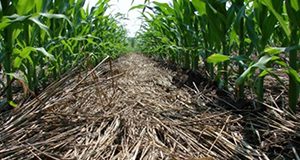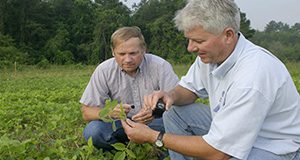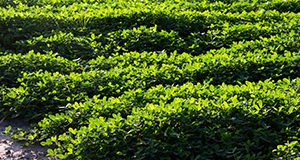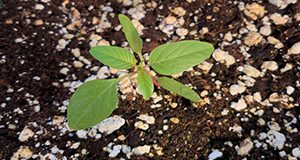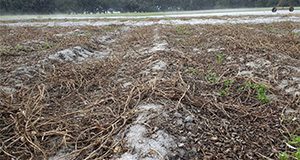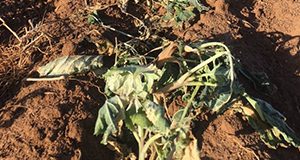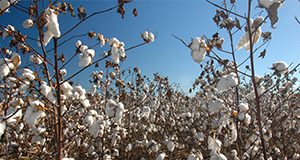When utilizing cover crops for weed suppression, one important consideration is effective termination before planting the main crop. A major issue with improper termination is that the cover crop can become problematic and compete with the main crop, like other weeds. However, proper planning of the termination timing and method can minimize these issues and maximize the benefits of cover crop use. This 5-page publication discusses herbicide application, roller-crimper termination, tillage, and appropriate growth stages for termination. Written by Pratap Devkota, Michael J. Mulvaney, and David Wright, and published by the UF/IFAS Agronomy Department, February 2021.
https://edis.ifas.ufl.edu/ag449
Tag: West Florida Research and Education Center
Weed Management in Soybeans
Successful weed control is one of the most important practices for economical soybean production in Florida. This 10-page publication discusses weed control methods for soybean growers. Written by J. A. Ferrell, G. E. MacDonald, and P. Devkota, and published by the UF/IFAS Agronomy Department, revised January 2021.
https://edis.ifas.ufl.edu/wg010
Boom Sprayer Calibration Tables
This 13-page publication is meant to make calibration of boom sprayers easier, and therefore more common, by providing a convenient chart that can be kept in barns, tractor cabs, sprayers, and mix-load facilities for quick reference. Written by Michael J. Mulvaney, Pratap Devkota, Ethan Carter, De Broughton, and Mark Mauldin, and published by the UF/IFAS Agronomy Department, November 2020.
https://edis.ifas.ufl.edu/ag446
Amaranthus palmeri—Palmer Amaranth
Palmer amaranth has become one of the most troublesome weeds in the southeastern US due to its vigorous growth rate, high seed production, and development of resistance to herbicides from multiple modes of action. This 4-page publication illustrates characteristics of this weed to assist in accurate identification, proper management, and development of effective control strategies. Written by Sergio Morichetti, Jason Ferrell, and Pratap Devkota, and published by the UF/IFAS Agronomy Department, revised April 2020.
https://edis.ifas.ufl.edu/ag346
Design and Construction of a Constant Head Infiltrometer
This new 8-page document details the construction procedure for a Mariotte siphon constant head infiltrometer using readily available materials. Written by Mahesh Bashyal, Michael J. Mulvaney, and Eban Z. Bean, and published by the UF/IFAS Agronomy Department, June 2019.
http://edis.ifas.ufl.edu/ag433
Nitrogen Contributions from Peanut Residues to Subsequent Crops
There is not enough evidence to support current peanut N credit recommendations in the Southeast. Nitrogen is released rapidly from peanut residues, and it moves quickly through light-textured soils found in this region. Only a relatively small amount of N from peanut residues is available when subsequent crops need it. This new 5-page document discusses peanut nitrogen credits, nitrogen release from peanut residues, crop performance following peanut, tillage and nitrogen release, and peanut residue distribution and nitrogen release. Written by Arun Jani and Michael J. Mulvaney, and published by the UF/IFAS Agronomy Department, April 2019.
http://edis.ifas.ufl.edu/ag431
Frost Damage of Carinata Grown in the Southeastern US
Brassica carinata is an annual oilseed crop used for the commercial production of jet fuel. One of the challenges to commercialization of this crop in the southeastern United States has been frost damage. This 4-page fact sheet discusses symptomology and ways to minimize risk of frost damage to carinata. Written by Michael J. Mulvaney, Ramdeo Seepaul, Ian Small, David Wright, Silvana Paula-Moraes, Carl Crozier, Paul Cockson, Brian Whipker, and Ramon Leon, and published by the UF/IFAS Agronomy Department, May 2018.
http://edis.ifas.ufl.edu/ag420
Using Dicamba in Dicamba-Tolerant Crops
After many years in development, dicamba will likely be fully approved for use in tolerant cotton varieties for the 2017 growing season. There is great concern that dicamba drift can result in significant losses in nearby sensitive crops. This concern is well-founded because many crops (such as soybean, snap bean, and peanut) are highly sensitive to extremely low doses of dicamba. All precautions must be followed if these new dicamba formulations are to be used. This 3-page fact sheet discusses herbicide selection, discontinued use of ammonium sulfate, nozzle selection, boom height, and wind speed. It also addresses a few frequently asked questions. Written by J. Ferrell and R. Leon, and published by the UF Agronomy Department, February 2017.
http://edis.ifas.ufl.edu/ag414
